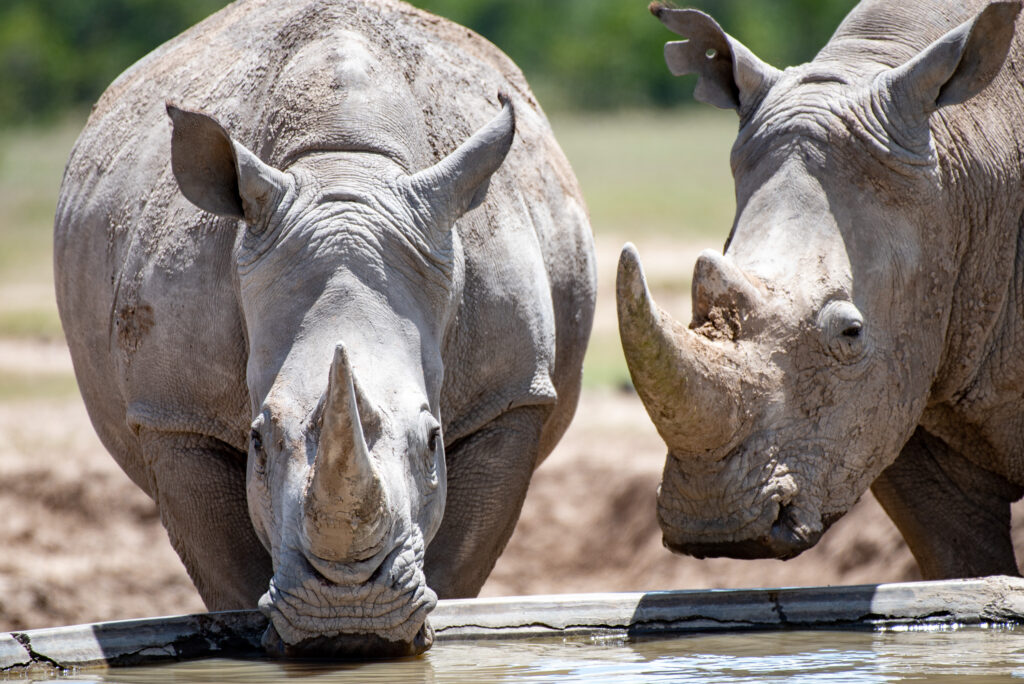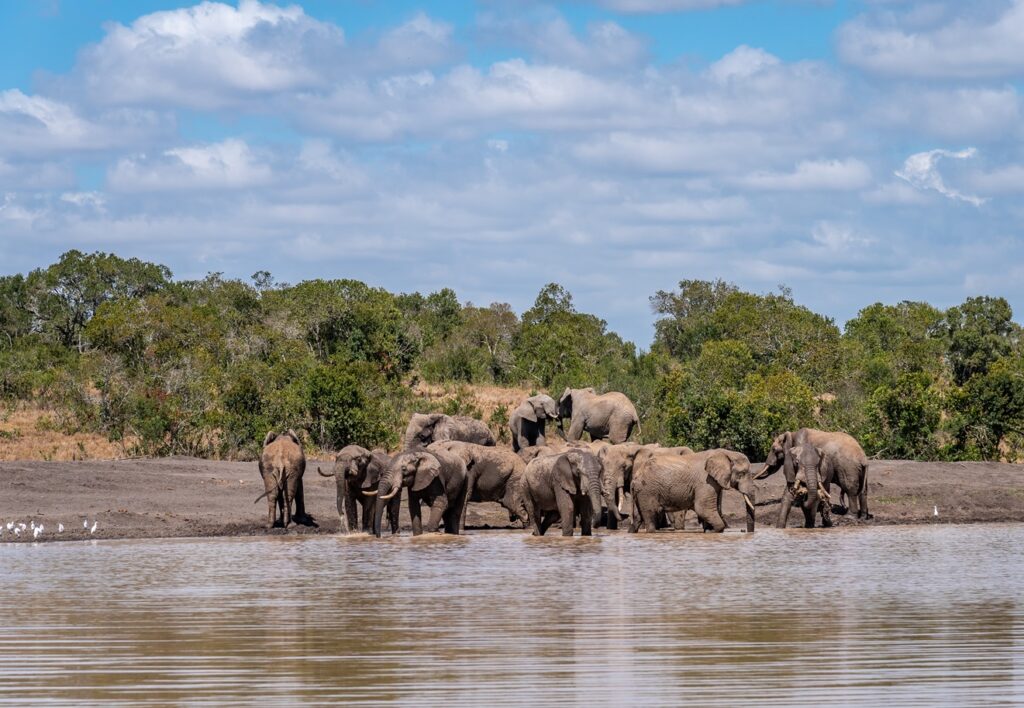In the face of escalating climate change and unpredictable weather patterns, safeguarding our planet’s natural resources has never been more critical. Nestled in the heart of Kenya’s Laikipia County, the Ol Pejeta Conservancy stands as a beacon of hope for wildlife and people alike. The Conservancy has long been a bastion for rhino conservation, but its mission goes beyond that.
Thanks to the support of Grundfos Kenya and the Foundation’s Community Engagement Grant, Ol Pejeta Conservancy is leading the way in sustainable water management, transforming the lives of both its wildlife and the surrounding communities.
Ngobit river running dry
The Ngobit River, a lifeline for countless communities downstream, has faced unprecedented challenges in recent times. The impacts of climate change, with increasingly erratic rainfall patterns, have caused this vital water source to run dry several times over the past 18 months—a first in living memory. The consequences have been dire, particularly for local farmers who rely on the river’s waters for their agricultural livelihoods.
“Water is the lifeblood of our Conservancy. Access to water impacts the distribution and health of animals, especially the Critically Endangered black rhino. Solarizing the Ngobit borehole is a crucial step to reduce pressure on resources,” says Samuel Mutisya, Head of Research & Conservation at Ol Pejeta.
Recognizing the urgency of the situation, Ol Pejeta Conservancy embarked on a project funded by the Grundfos Foundation: the solarization of a borehole at Ngobit. The project aimed to reduce the Conservancy’s reliance on and abstraction from the Ngobit River, ensuring a sustainable water supply both for the Conservancy and the 4,500 people living downstream.
Solarizing the Ngobit borehole
The solarization project at Ngobit borehole is a testament to environmental stewardship. By harnessing the power of the sun, this initiative provides a reliable source of water for Ol Pejeta Conservancy and significantly reduces the need to use pump water from the river with diesel generators (53% reduction in the last few months).
Solar panels capture the sun’s energy and convert it into power, enabling the borehole to pump water even in the driest of times. This not only reduces the Conservancy’s ecological footprint but also sets an inspiring example for conservation efforts worldwide.
Benefits for wildlife and people
The impacts of this project ripple far beyond the Conservancy’s borders. For the wildlife on Ol Pejeta, the solarized borehole ensures regular access to water, even during periods of extreme drought. This supports critical populations of endangered species, as they depend on these water sources daily.
Furthermore, the benefits extend to the local communities downstream.
“The support from the Grundfos Foundation is timely, as continued water scarcity would lead to more wildlife loss and community conflicts. We’re grateful for the support from the Grundfos Foundation, not only for our conservation efforts but also for the well-being of local communities downstream,” says Samuel Mutisya, Head of Research & Conservation at Ol Pejeta.
By reducing the Conservancy’s reliance on the Ngobit river, the project contributes to the broader conversation about responsible water management in the face of climate change. Looking ahead, Ol Pejeta has outlined an ambitious 7-year water masterplan. This comprehensive strategy includes the development of additional boreholes and dams, upgrades and replacements of existing pipelines and storage, and innovative water recycling initiatives. These projects will not only enhance water supply but also reduce the conservancy’s environmental footprint.



